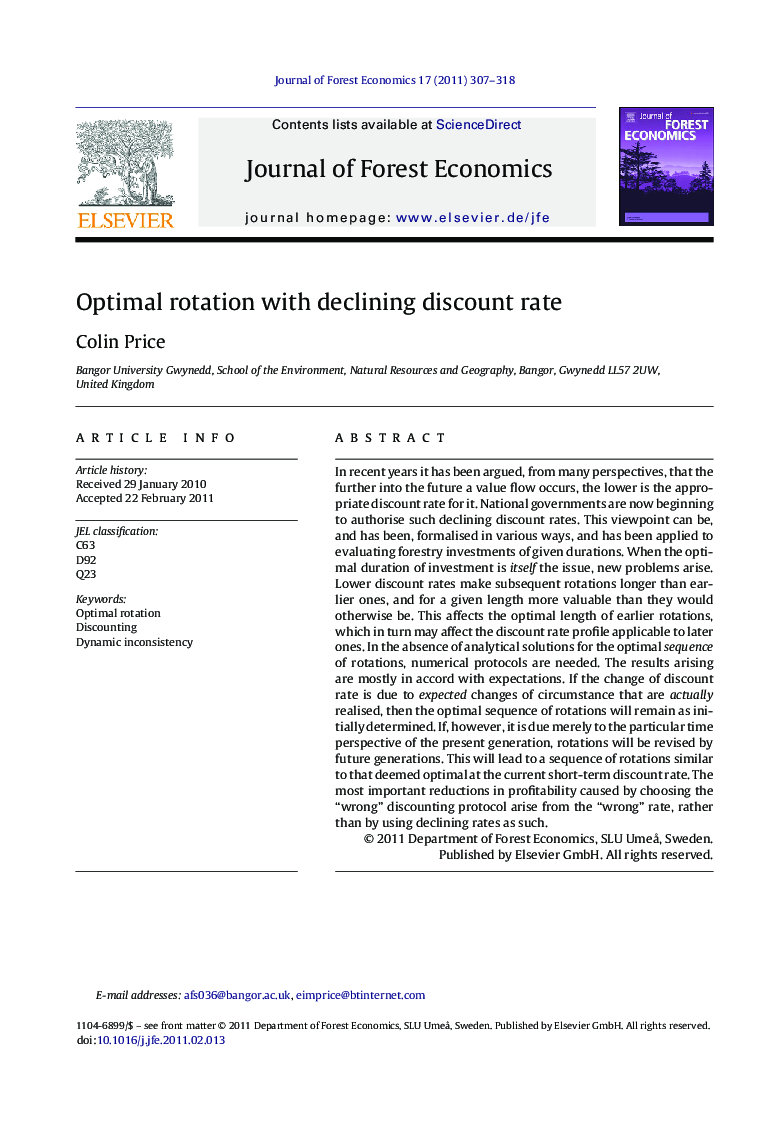| Article ID | Journal | Published Year | Pages | File Type |
|---|---|---|---|---|
| 91902 | Journal of Forest Economics | 2011 | 12 Pages |
In recent years it has been argued, from many perspectives, that the further into the future a value flow occurs, the lower is the appropriate discount rate for it. National governments are now beginning to authorise such declining discount rates. This viewpoint can be, and has been, formalised in various ways, and has been applied to evaluating forestry investments of given durations. When the optimal duration of investment is itself the issue, new problems arise. Lower discount rates make subsequent rotations longer than earlier ones, and for a given length more valuable than they would otherwise be. This affects the optimal length of earlier rotations, which in turn may affect the discount rate profile applicable to later ones. In the absence of analytical solutions for the optimal sequence of rotations, numerical protocols are needed. The results arising are mostly in accord with expectations. If the change of discount rate is due to expected changes of circumstance that are actually realised, then the optimal sequence of rotations will remain as initially determined. If, however, it is due merely to the particular time perspective of the present generation, rotations will be revised by future generations. This will lead to a sequence of rotations similar to that deemed optimal at the current short-term discount rate. The most important reductions in profitability caused by choosing the “wrong” discounting protocol arise from the “wrong” rate, rather than by using declining rates as such.
